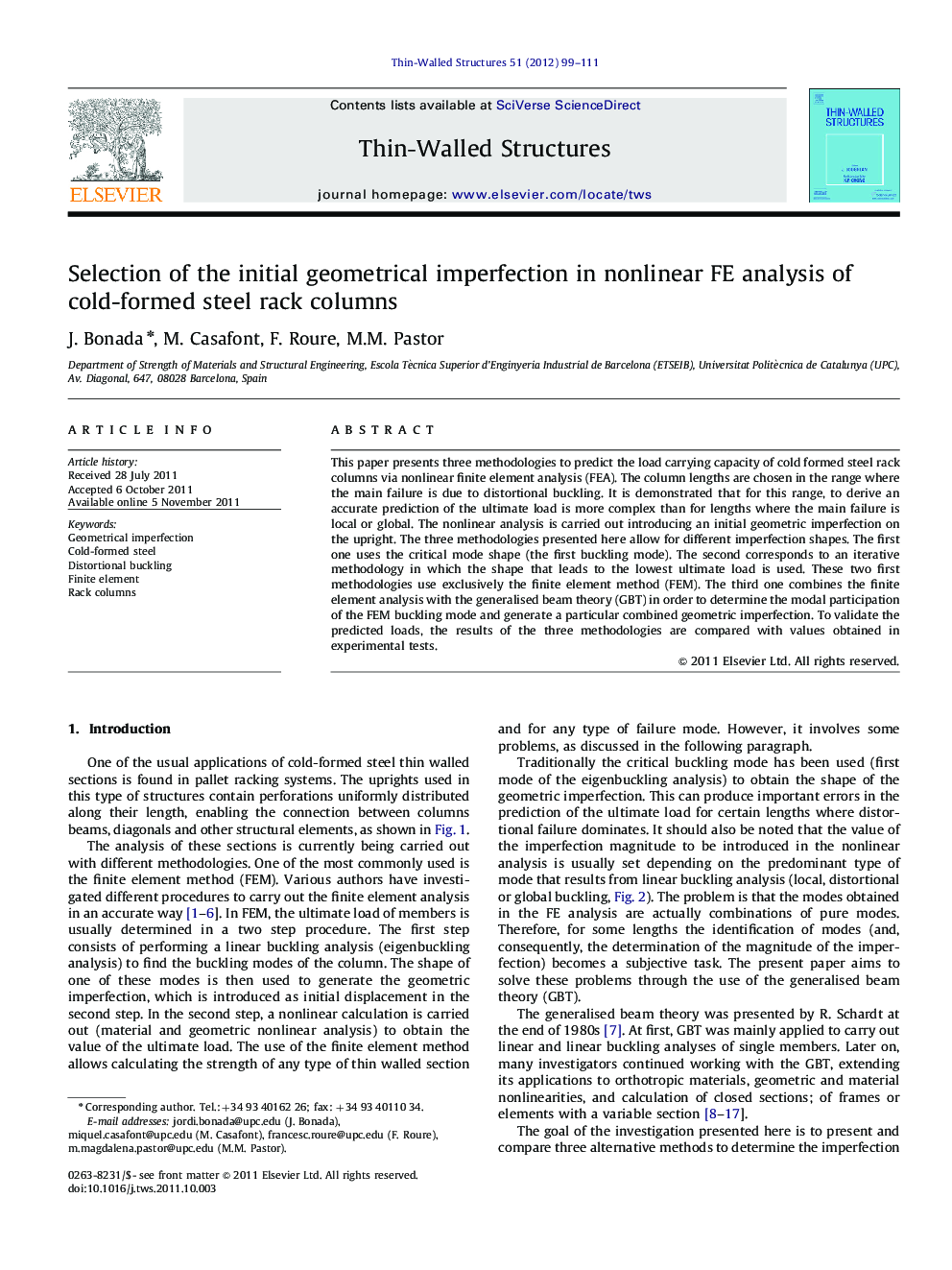| Article ID | Journal | Published Year | Pages | File Type |
|---|---|---|---|---|
| 309366 | Thin-Walled Structures | 2012 | 13 Pages |
This paper presents three methodologies to predict the load carrying capacity of cold formed steel rack columns via nonlinear finite element analysis (FEA). The column lengths are chosen in the range where the main failure is due to distortional buckling. It is demonstrated that for this range, to derive an accurate prediction of the ultimate load is more complex than for lengths where the main failure is local or global. The nonlinear analysis is carried out introducing an initial geometric imperfection on the upright. The three methodologies presented here allow for different imperfection shapes. The first one uses the critical mode shape (the first buckling mode). The second corresponds to an iterative methodology in which the shape that leads to the lowest ultimate load is used. These two first methodologies use exclusively the finite element method (FEM). The third one combines the finite element analysis with the generalised beam theory (GBT) in order to determine the modal participation of the FEM buckling mode and generate a particular combined geometric imperfection. To validate the predicted loads, the results of the three methodologies are compared with values obtained in experimental tests.
► Three different methodologies to generate the geometrical imperfection to carry out nonlinear FE analysis are presented. ► The use of the first buckling mode shape does not guarantee accurate results for rack columns at lengths where the distortional failure is dominant. ► The developed coupled FEM-GBT method is objective in modal identification. ► The failure modes from the coupled FEM–GBT method coincide with the experimental tests.
